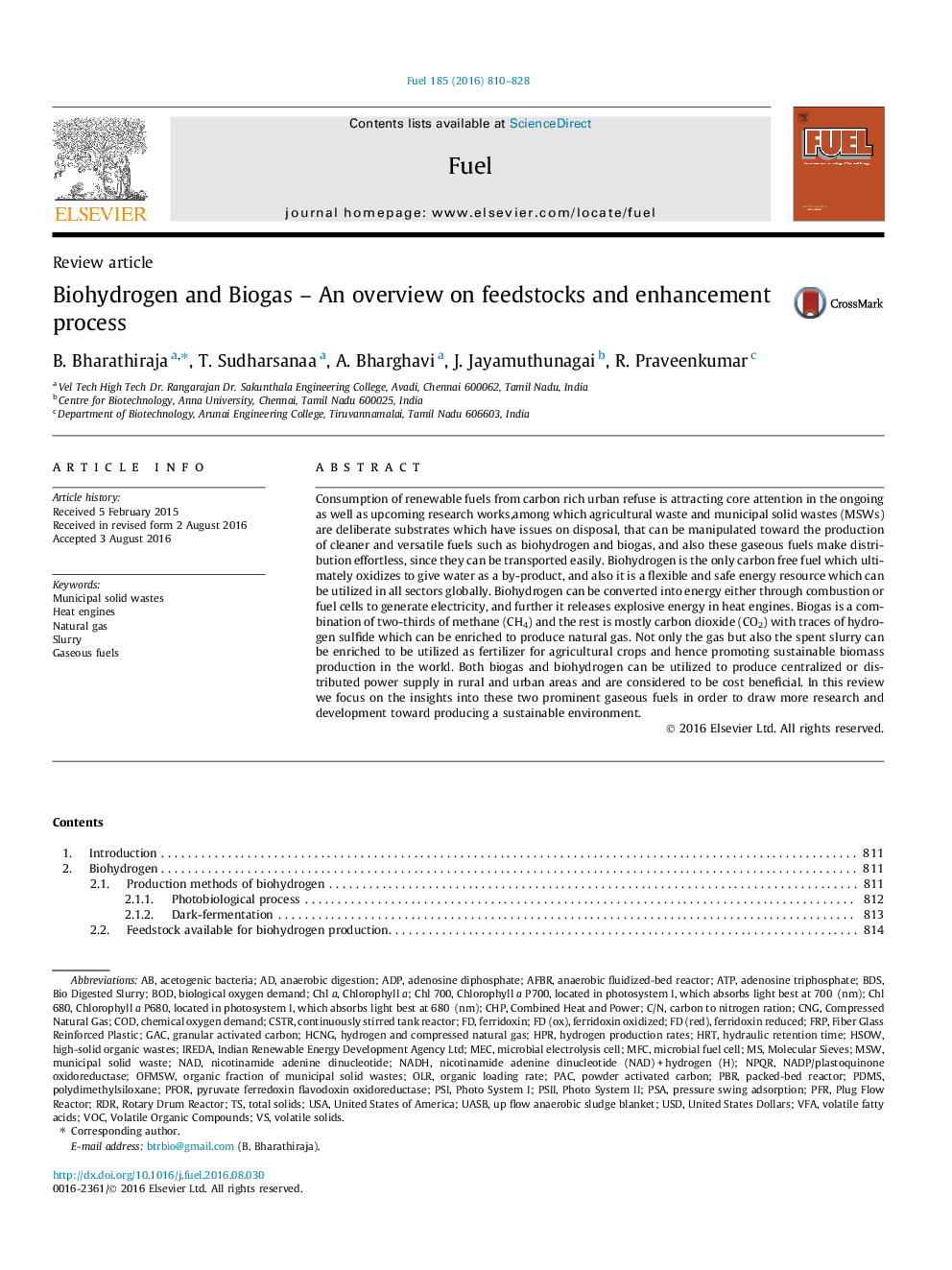| Article ID | Journal | Published Year | Pages | File Type |
|---|---|---|---|---|
| 6632727 | Fuel | 2016 | 19 Pages |
Abstract
Consumption of renewable fuels from carbon rich urban refuse is attracting core attention in the ongoing as well as upcoming research works,among which agricultural waste and municipal solid wastes (MSWs) are deliberate substrates which have issues on disposal, that can be manipulated toward the production of cleaner and versatile fuels such as biohydrogen and biogas, and also these gaseous fuels make distribution effortless, since they can be transported easily. Biohydrogen is the only carbon free fuel which ultimately oxidizes to give water as a by-product, and also it is a flexible and safe energy resource which can be utilized in all sectors globally. Biohydrogen can be converted into energy either through combustion or fuel cells to generate electricity, and further it releases explosive energy in heat engines. Biogas is a combination of two-thirds of methane (CH4) and the rest is mostly carbon dioxide (CO2) with traces of hydrogen sulfide which can be enriched to produce natural gas. Not only the gas but also the spent slurry can be enriched to be utilized as fertilizer for agricultural crops and hence promoting sustainable biomass production in the world. Both biogas and biohydrogen can be utilized to produce centralized or distributed power supply in rural and urban areas and are considered to be cost beneficial. In this review we focus on the insights into these two prominent gaseous fuels in order to draw more research and development toward producing a sustainable environment.
Keywords
PACCSTRPFRMFCVOCHRTOLRUASBAFBRMECGACPSAVFAPBROFMSWPSIPSIIChl aBDSADPHPRHCNGRDRIREDACHPBODCNGMSWPDMSC/NAdenosine TriphosphateATPadenosine diphosphateVolatile fatty acidsPFORUnited States of AmericaUSAAcetogenic bacteriaCombined Heat and PowerVolatile organic compoundsBiological Oxygen Demandchemical oxygen demandTotal solidsvolatile solidspressure swing adsorptionUnited States dollarsUSDPacked-bed reactorContinuously stirred tank reactorplug flow reactorRotary drum reactorMunicipal solid wastehydraulic retention timeMicrobial electrolysis cellMicrobial fuel cellGaseous fuelsMolecular sievesFRPSlurryMunicipal solid wastesHeat enginesNADNADHOrganic loading ratenicotinamide adenine dinucleotideAnaerobic digestionPolydimethylsiloxaneCodPowder activated carbonGranular activated carbonOrganic fraction of municipal solid wastesChlorophyll aNatural gascompressed natural gas
Related Topics
Physical Sciences and Engineering
Chemical Engineering
Chemical Engineering (General)
Authors
B. Bharathiraja, T. Sudharsanaa, A. Bharghavi, J. Jayamuthunagai, R. Praveenkumar,
